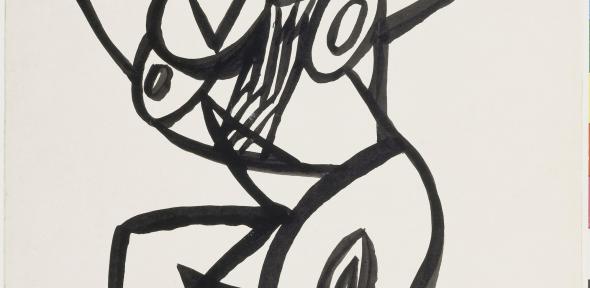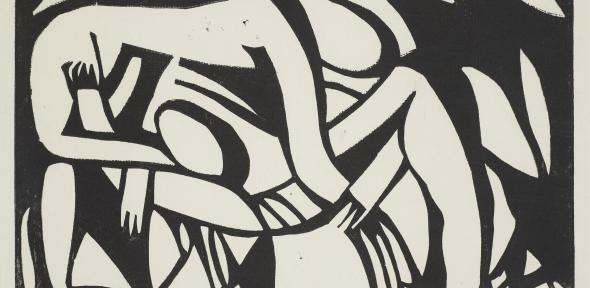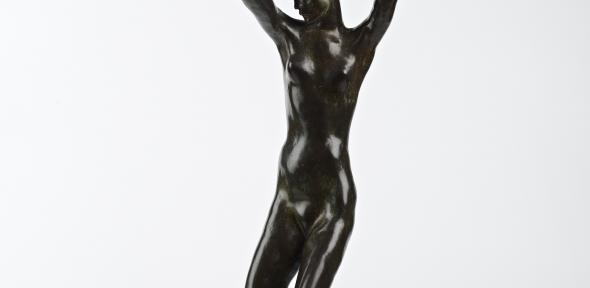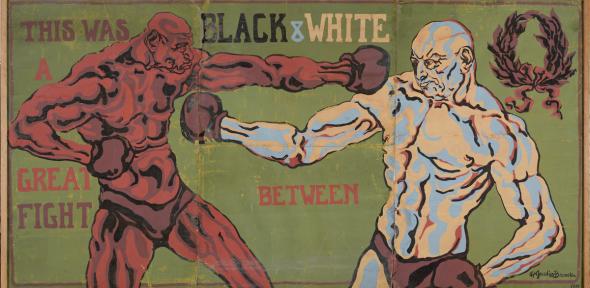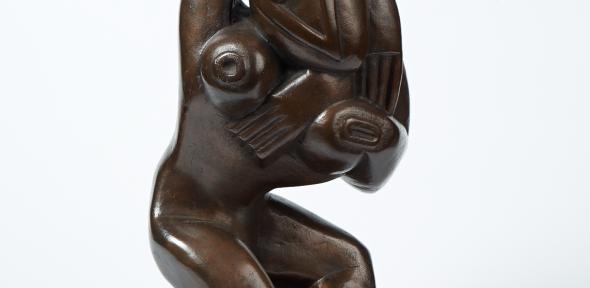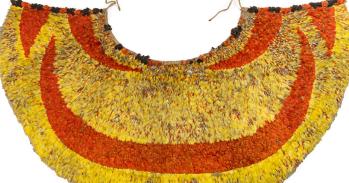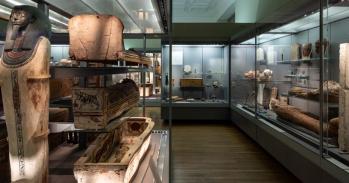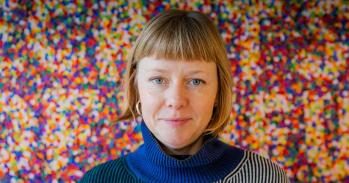
From March 17, Kettle’s Yard will present a major exhibition to mark the centenary of the death in the First World War of the French-born sculptor and draughtsman Henri Gaudier-Brzeska (1891-1915).
From March 17, Kettle’s Yard will present a major exhibition to mark the centenary of the death in the First World War of the French-born sculptor and draughtsman Henri Gaudier-Brzeska (1891-1915).
A great spirit has been among us, and a great artist is gone.
Ezra Pound
Gaudier-Brzeska moved permanently to London in January 1911. He made a significant contribution to the development of modern sculpture as one of the key members of the Vorticist movement and by influencing a later generation of sculptors.
His precocious artistic talent was cut short by his death at the age of 23 while fighting for the French army in Neuville St Vaast, France, in 1915. As Ezra Pound wrote in 1916: ‘A great spirit has been among us, and a great artist is gone’.
The exhibition, NEW RHYTHMS Henri Gaudier-Brzeska: Art Dance and Movement in London 1911-1915, is the first to explore the artist’s engagement with dance and movement. New Rhythms brings together sculpture, drawing, photography, film, and archive material, combining the strengths of Kettle’s Yard’s sculpture and drawing collections with important loans from national and international institutions.
The exhibition includes work by Gaudier-Brzeska’s contemporaries David Bomberg, Jacob Epstein, Percy Wyndham Lewis, William Roberts, Auguste Rodin, Helen Saunders and others who engaged with the subject of dance.
Kettle’s Yard holds one of the largest collections of sculptures and drawings by Gaudier-Brzeska, acquired by the creator of Kettle’s Yard, Jim Ede in 1929. Ede went on to write the first seminal biography of Gaudier- Brzeska ‘Savage Messiah’ in 1930, using the letters that were exchanged between Gaudier-Brzeska and his partner Sophie Brzeska.
New Rhythms takes as its starting point Gaudier‐ Brzeska’s two contrasting sculptures Red Stone Dancer and Dancer. The exhibition looks in detail at the inspirations for the two sculptures of 1913, using them as studies for a wider exploration of the artist’s interests in the subject and the cultural milieu in which he was working.
For example, his engagement with the dynamic performances of the Ballets Russes is brought to the fore through his bronze Firebird (1912). As well as exploring dance, New Rhythms will investigate the artist’s wider fascination with motion, the physical dynamism of bodily movement, and wrestling.
The new dance trends that exploded onto pre‐war London stages and screens such as Apache dance from Paris and Tango, and performances by the Ballets Russes, will be represented through photographs, printed sources and film.
The show culminates by asking how Gaudier‐Brzeska’s dancers can inspire new rhythms now, through a contemporary dance and music commission. The work by Malgorzata Dzierzon, performed to new music commissioned from emerging composer Kate Whitley, will feature in the exhibition through film.
This will be the final exhibition at Kettle’s Yard before closing for a major development of the site and offers a chance for visitors to enjoy the house and an exhibition intimately linked to it and the permanent collection. It closes on June 21, 2015.
For more about the development plans and off site activity visit www.kettlesyard.co.uk.
.
The exhibition will tour with selected works to Harewood House, Leeds, from 11 July to 1 November 2015 and is supported by the Henry Moore Foundation.
The text in this work is licensed under a Creative Commons Licence. If you use this content on your site please link back to this page. For image rights, please see the credits associated with each individual image.

